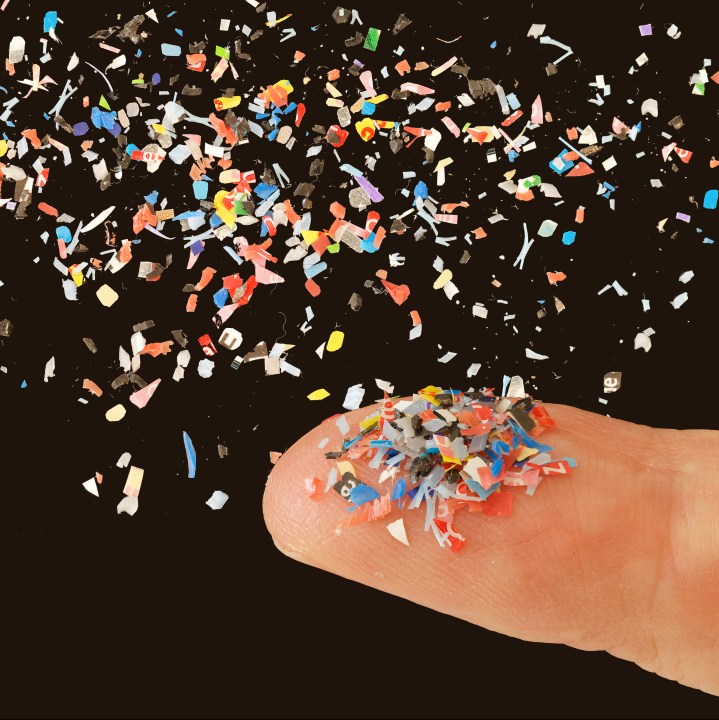HONOLULU (KHON2) — Plastic is everywhere. It’s in the ocean, in the air, in everything we eat from meats to veggies and fruits and even in the clothes we wear. Most people know about plastic straws and bags, but what about your favorite hoodie or yoga pants?
The Associated Press reported recently that many common garments are made from synthetic materials like polyester and nylon, which are actually forms of plastic. And when we wear, wash or dry those clothes, tiny bits of plastic known as microplastics get released into the environment.
Microplastics have been found on some of the most remote beaches in the world. They have even been found on uninhabited islands like Kamilo Beach on Hawaiʻi Island where plastic outweighs sand in some areas.
Even local fishermen and researchers have documented microplastics in the stomachs of ahi, mahimahi and other reef fish. That means plastics from your laundry could end up in your poke bowl.
And due to Hawaiʻi’s location in the North Pacific Gyre, the islands are especially susceptible to marine debris carried by ocean currents. It turns local plastic habits into global pollution problems, and vice versa.
Here are nine essential things to know about this hidden source of pollution and what we can do about it.
1. Your clothes might be made of plastic
Many popular fabrics are synthetic, meaning they’re made from plastic. Polyester, nylon, acrylic, and spandex are all plastic-based fibers. They’re stretchy, lightweight and cheap—but when you wear or wash them, they shed microscopic plastic fibers.
Even clothes that look soft and cozy—like fleece jackets or yoga leggings—can release thousands, even millions, of these tiny pieces into the water or air with every wash.
2. Washing and drying are big problem areas
Every time you do laundry, clothes get tossed and turned, rubbing against each other and breaking down bit by bit. A single load of laundry can release millions of microplastic fibers. Wastewater treatment plants don’t catch them all, so many end up in rivers and oceans.
Dryers are another problem. They release microfibers into the air instead of water, which means they can float away and spread.
3. Microplastics travel through the food chain
Once in the water, microplastics can be eaten by marine animals, from tiny plankton to large fish. These plastics don’t go away. They build up and can move up the food chain—eventually making their way into the foods humans eat.
That means a shirt you washed today could, in a roundabout way, end up back on your plate.
4. Even natural fabrics can shed fibers
Cotton, wool and other natural materials also shed, though usually in smaller amounts. And many of these fabrics are treated with chemicals during manufacturing, which can also wash off and pollute water.
So, while natural materials are generally better, they’re not a perfect solution unless they’re produced responsibly.
5. Polyester is everywhere and a big part of the problem
Polyester is the most used fiber in the world. It’s durable, cheap, and found in everything from sportswear to school uniforms. Synthetic materials now make up about two-thirds of all clothing fibers globally.
That means polyester isn’t just a fashion trend—it’s a global environmental issue.
6. You can reduce shedding with simple laundry tweaks
Want to help? Start with your laundry. Wash clothes less often, use cold water, and fill the machine all the way to reduce friction. Skip the dryer when you can and hang clothes to dry instead.
Shorter wash cycles also help. So does spot-cleaning with a stain stick instead of tossing something into the machine every time it gets a little dirty.
7. Tools like the Cora Ball and washing gags can help
New inventions are helping catch microfibers before they escape. One example is the Cora Ball, a laundry ball inspired by coral that grabs fibers during the wash. Another option is a special washing bag that traps fibers from synthetic clothes before they enter the drain.
Some washing machines can now be fitted with microfiber filters. They’re not perfect, but they’re a step in the right direction.
8. Laws and industry action are just beginning
France has passed a law requiring all new washing machines to include microfiber filters, though it hasn’t been enforced yet. In the U.S., similar efforts have faced pushback due to cost concerns.
Meanwhile, some companies are working on the problem from the manufacturing side. Patagonia and others have partnered with researchers to test fabrics, design better materials, and reduce shedding right at the factory.
Their goal: make clothes that last longer, shed less, and start out with fewer harmful chemicals.
9. Change starts with awareness and smart choices
It’s easy to feel overwhelmed by the scale of plastic pollution. But every step helps. Being more mindful about the clothes you buy, how often you wash them, and how you care for them can reduce your impact.
Think before you toss a shirt into the wash. Choose fewer synthetic garments. Support companies working on sustainable solutions. Share what you learn.
With most of Hawaiʻi’s clothing and goods imported, the reliance on synthetic fibers is high and amplifies the importance of local awareness, laundry habits and waste management in curbing pollution.
The microplastic problem didn’t start overnight, and it won’t be solved that way either. But every small change adds up.
Plastic pollution isn’t just about what’s thrown away. It’s also about what we wear every day. Knowing how your clothes affect the planet is the first step to making a difference.
